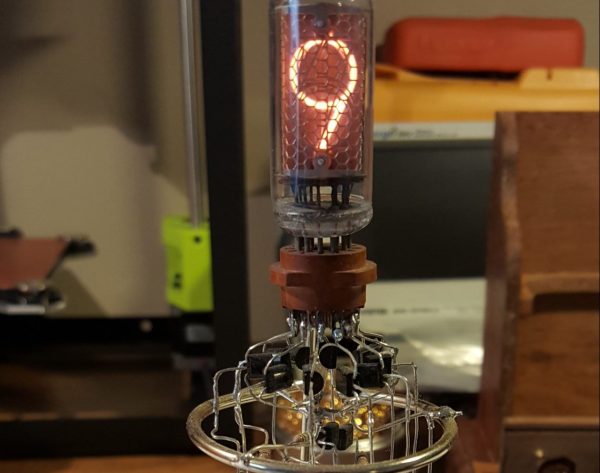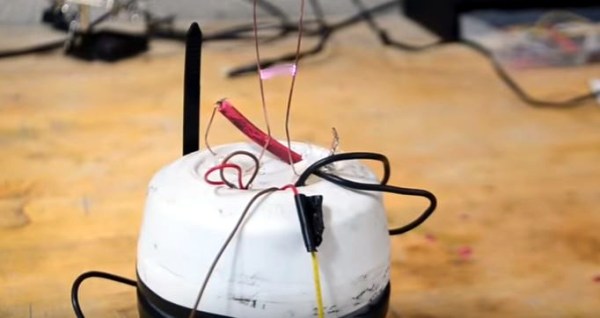Scenario: your little three-hour boat tour runs into a storm, and you’re shipwrecked on a tropic island paradise. You’re pretty sure your new home was once a nuclear test site, but you have no way to check. Only your scrap bin, camera bag, and hot glue gun survived the wreck. Can you put together a Geiger-Müller counter from scrap and save the day?
Probably not, unless your scrap bin is unusually well stocked and contains a surplus Russian SI-3BG miniature Geiger tube, the heart of [GH]’s desert island build. These tubes need around 400 volts across them for incident beta particles or gamma rays to start the ionization avalanche that lets it produce an output pulse. [GH]’s build uses the flash power supply of a disposable 35mm camera to generate the high voltage needed, but you could try using a CCFL inverter, say. The output of the tube tickles the base of a small signal transistor and makes a click in an earbud for every pulse detected.
You’ll no doubt notice the gallons of hot glue, alligator clips, and electrical tape used in the build, apparently in lieu of soldering. While we doubt the long-term robustness of this technique, far be it from us to cast stones – [GH] shows us what you can accomplish even when you find yourself without the most basic of tools.
Continue reading “A No-Solder, Scrap-Bin Geiger Counter For $15”








 This tube follows the same principle of operation as its smaller cousin, the plasma globe. Air is evacuated and the tube is filled with a mixture of noble gases, with the particular mixture being responsible for the color of the filaments. Then, high voltage AC is applied to an electrode, which causes the moving tendrils of colored light to extend from the electrode to the outer glass, a phenomenon known as
This tube follows the same principle of operation as its smaller cousin, the plasma globe. Air is evacuated and the tube is filled with a mixture of noble gases, with the particular mixture being responsible for the color of the filaments. Then, high voltage AC is applied to an electrode, which causes the moving tendrils of colored light to extend from the electrode to the outer glass, a phenomenon known as 








